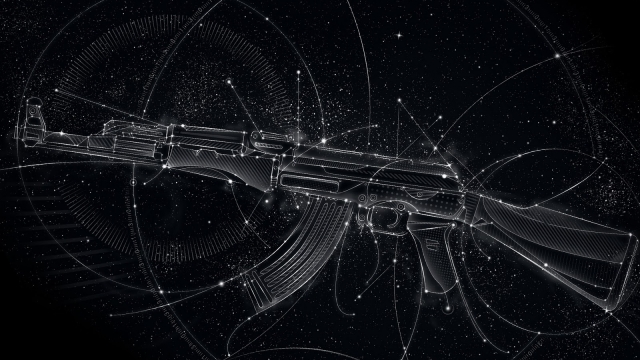Aim for Safety: Exploring the World of Firearms
Firearms, a complex and sensitive topic that sparks various opinions and emotions. Whether one views them as tools for self-defense or a source of danger, it is undeniable that firearms hold a significant place in our society. Understanding the intricacies of these weapons is crucial for promoting safety and responsible usage. In this article, we delve into the world of firearms, exploring their components, ammunition, and the importance of proper education and regulations. By shedding light on this topic, we aim to foster informed discussions and encourage responsible practices in the realm of firearms.
Types of Ammunition
In the vast world of firearms, understanding the different types of ammunition is essential for both enthusiasts and newcomers alike. Ammunition refers to the various cartridges and projectiles used in firearms. This section will provide an overview of the different types of ammunition commonly found in the market.
-
Rimfire Ammunition: One of the most widely used types of ammunition, especially for small caliber firearms, is rimfire ammunition. In this type, the firing pin strikes the rim of the cartridge to ignite the primer, which then initiates the firing process. Rimfire ammunition is known for its affordability and is often used in sporting and recreational shooting activities.
-
Centerfire Ammunition: Another commonly encountered type of ammunition is centerfire ammunition. In contrast to rimfire, centerfire cartridges have the primer located in the center of the cartridge case base. This design allows for greater versatility and power in terms of caliber and performance. Centerfire ammunition is extensively used in self-defense, hunting, and military applications.
-
Shotgun Shells: Shotgun ammunition, known as shotgun shells, merits its own category due to its unique design and application. These shells consist of a plastic or paper casing, with the shot, or sometimes a single slug, contained within. The gauge of a shotgun shell indicates its caliber, with 12-gauge being the most popular. Shotguns are commonly used in hunting, sports shooting, and home defense.
Understanding the different types of ammunition is crucial for responsible firearm ownership and usage. By knowing the distinctions between rimfire, centerfire, and shotgun ammunition, firearm enthusiasts can make informed decisions about the most suitable cartridges for their specific needs.
Different Types of Firearms
In the world of firearms, there exists a diverse range of options to suit various needs and preferences. From handguns to rifles, each type of firearm serves a specific purpose. Let’s explore the different types of firearms and their functionalities.
-
Handguns: As the name suggests, handguns are designed to be operated with one hand. They come in two primary forms: revolvers and semi-automatic pistols. Revolvers are known for their rotating cylinder that houses multiple chambers for ammunition. On the other hand, semi-automatic pistols use a magazine to feed rounds into the chamber automatically.
- Gun Store
Rifles: Rifles are long-barreled firearms typically designed for long-range accuracy. They are commonly used for hunting, competitive shooting, and military operations. Rifles can be categorized into different types, such as bolt-action, lever-action, and semi-automatic rifles. Bolt-action rifles require manual operation to load and fire each round. Lever-action rifles, as the name implies, utilize a lever to load ammunition and cycle the action. Semi-automatic rifles use gas or recoil energy to automatically chamber a new round after each shot.
-
Shotguns: Shotguns are firearms that fire a shell containing small spherical projectiles, known as shot or pellets. They are commonly used for hunting birds, sporting events, and self-defense. Shotguns can have either a smoothbore or a rifled barrel. Smoothbore shotguns are intended for shooting shotshells, while rifled shotguns are used for shooting slugs, which are solid projectiles.
In conclusion, firearms encompass a wide range of options, such as handguns, rifles, and shotguns, each serving unique purposes. Understanding the different types of firearms helps individuals make informed decisions based on their intended use and personal preferences.
Safety Precautions
-
Proper Handling and Storage:
Always ensure that firearms are handled safely and responsibly. When picking up or holding a firearm, remember to keep your finger off the trigger until you are ready to shoot. Additionally, it is essential to keep firearms securely stored in a locked cabinet or safe when they are not in use. This helps prevent unauthorized access, particularly by children or individuals who are not trained in firearm safety. -
Adequate Training and Education:
Before handling a firearm, it is crucial to receive proper training and education on its safe operation. Familiarize yourself with the specific make and model of the firearm you intend to use, as different firearms may have different safety mechanisms and handling procedures. Take advantage of training courses and seek guidance from experienced individuals or certified instructors to develop your understanding of firearm safety. -
Regular Maintenance and Inspection:
Firearms should be regularly inspected and maintained to ensure their proper functioning and safety. Clean the firearm regularly and inspect it for any signs of wear or damage. Check the ammunition for any defects or corrosion, as using faulty ammunition may cause serious malfunctions. By maintaining and inspecting your firearms, you can help minimize the risk of accidents or malfunctions during use.

